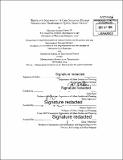| dc.contributor.advisor | Carlo Ratti. | en_US |
| dc.contributor.author | Greco, Michael Angelo, III | en_US |
| dc.contributor.other | Massachusetts Institute of Technology. Technology and Policy Program. | en_US |
| dc.coverage.spatial | a-su--- | en_US |
| dc.date.accessioned | 2015-02-25T17:11:09Z | |
| dc.date.available | 2015-02-25T17:11:09Z | |
| dc.date.copyright | 2014 | en_US |
| dc.date.issued | 2014 | en_US |
| dc.identifier.uri | http://hdl.handle.net/1721.1/95576 | |
| dc.description | Thesis: M.C.P., Massachusetts Institute of Technology, Department of Urban Studies and Planning, 2014. | en_US |
| dc.description | Thesis: S.M. in Technology Policy, Massachusetts Institute of Technology, Engineering Systems Division, Technology and Policy Program, 2014. | en_US |
| dc.description | Cataloged from PDF version of thesis. | en_US |
| dc.description | Includes bibliographical references (pages 78-81). | en_US |
| dc.description.abstract | Since the onset of the Arab Spring in late 2010, waves of political activism have reverberated across much of the Arab world. A growing body of literature has emerged that explores how new communications and social media technologies have contributed to, and in certain cases instigated various forms of collective action. However, little research has examined the effect of these activities on communication patterns themselves. This thesis aims to investigate the reorganization of sociability under civil duress at an aggregate, urban scale. The study employs a novel approach to communications analysis, applying the Synthetic Control Method to estimate the causal effect of riots on different characteristics of human interaction within Qatif, Saudi Arabia, after an exogenous shock triggered a surge in public demonstrations. The analysis reveals a strong, statistically significant drop in total call volume, relative to other cities in Saudi Arabia. This is combined with a similarly strong and statistically significant drop in unique daily callers-demonstrating that people weren't only making fewer calls, fewer people were participating in the telecom network each day. Interestingly, daily phone activity is shown to increase within the subnetwork of users identified to hold strong spatiotemporal ties to the city, even though their total activity measures (which include connections both internal and external to the subnetwork) remain constant. This suggests a shift in callee preference for individuals who are more directly affected by urban unrest. Lastly, information transmission tests are performed on Qatif's pre and post treatment interaction networks. Initial research shows that-beyond a 26% diffusion threshold-information reaches more people faster through the post treatment network. This provides some support to the hypothesis that communities under duress intelligently reorganize communications to increase dissemination speed and breadth, however, further research will be required to refine these findings and demonstrate a causal link. | en_US |
| dc.description.statementofresponsibility | by Michael Angelo Greco III. | en_US |
| dc.format.extent | 82 pages | en_US |
| dc.language.iso | eng | en_US |
| dc.publisher | Massachusetts Institute of Technology | en_US |
| dc.rights | M.I.T. theses are protected by copyright. They may be viewed from this source for any purpose, but reproduction or distribution in any format is prohibited without written permission. See provided URL for inquiries about permission. | en_US |
| dc.rights.uri | http://dspace.mit.edu/handle/1721.1/7582 | en_US |
| dc.subject | Urban Studies and Planning. | en_US |
| dc.subject | Engineering Systems Division. | en_US |
| dc.subject | Technology and Policy Program. | en_US |
| dc.title | "Riots and Sociability : a case study of human interaction networks in Qatif Saudi Arabia" | en_US |
| dc.title.alternative | Riots and Sociability | en_US |
| dc.title.alternative | Case study of human interaction networks in Qatif Saudi Arabia | en_US |
| dc.type | Thesis | en_US |
| dc.description.degree | M.C.P. | en_US |
| dc.description.degree | S.M. in Technology Policy | en_US |
| dc.contributor.department | Massachusetts Institute of Technology. Department of Urban Studies and Planning | |
| dc.contributor.department | Massachusetts Institute of Technology. Engineering Systems Division | |
| dc.contributor.department | Technology and Policy Program | |
| dc.identifier.oclc | 903599248 | en_US |
